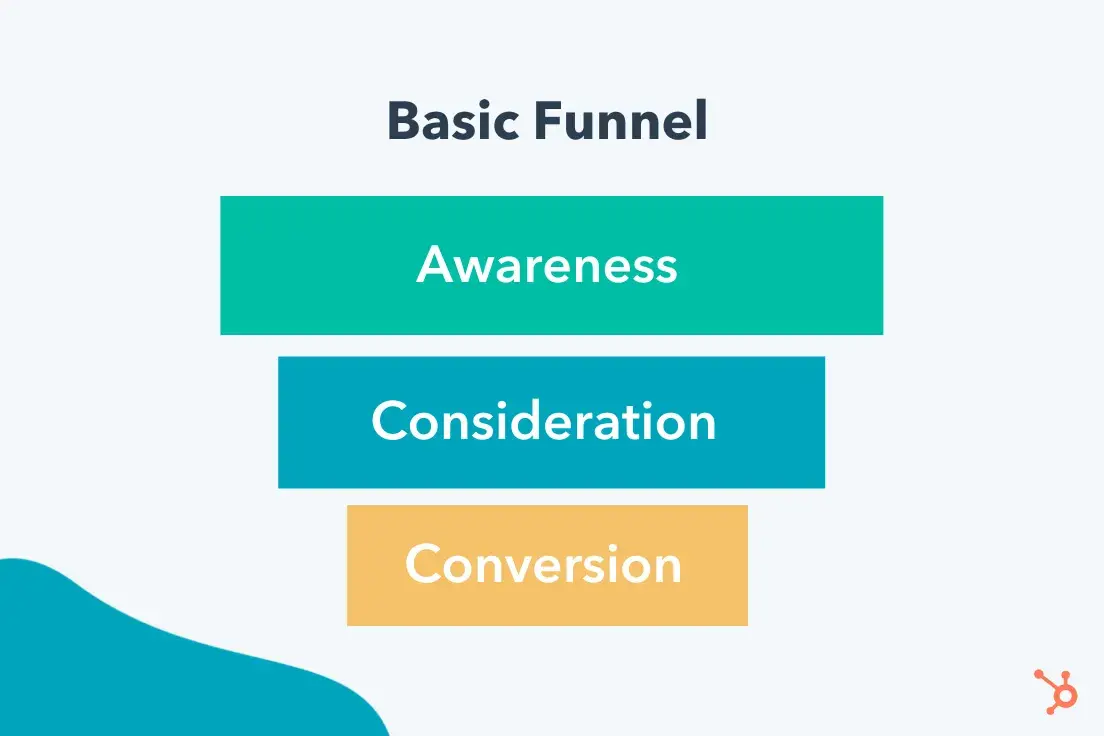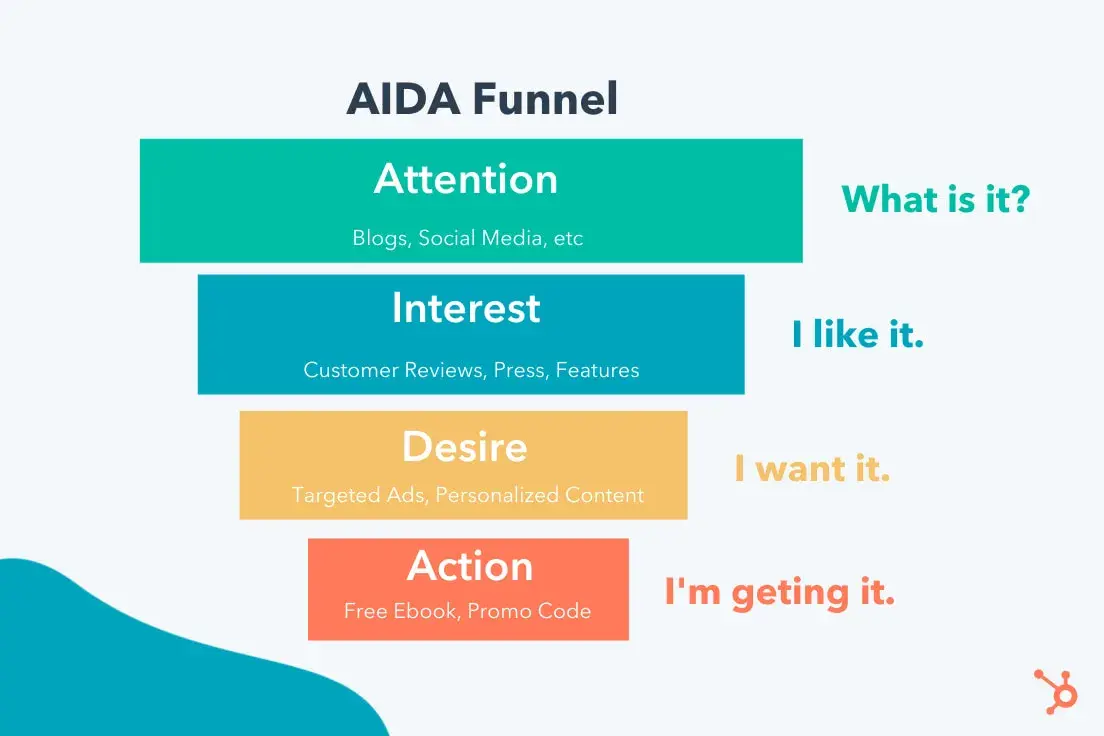I fly Southwest Airlines almost exclusively, and one thing I’ve noticed about Southwest is that their branding is on point.
Whether I’m booking a flight on their mobile application, being served my go-to in-flight ginger ale, or walking through the terminal at Midway Airport, I’m surrounded by Southwest’s consistent brand colors, messaging, and imagery.
This is an example of integrated marketing at work. If you’re interested in presenting a cohesive, consistent brand experience that leaves your products or services top-of-mind — like Southwest does — this guide is for you.
Read on to learn more about integrated marketing, how to weave it into your marketing plan, and how to create your own campaign.
Table of Contents
Imagine discovering a new brand on Instagram and visiting the company’s website to purchase one of its products. If their website promoted a different message or campaign than the one you found on their Instagram account, you’d have a hard time understanding the gist of the brand, right?
Integrated marketing exists to eliminate these disparities and differences regardless of how or when a customer interacts with your brand. It’s similar to multi-channel marketing, except integrated marketing aligns the message you share on all those channels.
I’ve found that integrated marketing doesn’t just apply only to your inbound or digital marketing channels; it also includes traditional media channels. Many integrated marketing examples I’ll review below incorporate conventional marketing channels such as print, radio, and TV ads.
Why are integrated marketing communication plans effective?
While integrated marketing campaigns can differ in their goals (e.g., converting views, building brand awareness, etc.), they should all have one component in common: to align your marketing channels to present a united marketing “front.”
I’ve also found it more effective to run integrated marketing campaigns than campaigns on individual channels. Integrated marketing campaigns are more impactful for a few reasons because they tend to:
- Reach a wider audience than a single marketing channel.
- Increase visibility as they are more likely to be seen on multiple channels.
- Build trust with visitors as they see a consistent message on multiple channels.
- Save you money since assets are shareable between different marketing channels.
So, how can you build your integrated marketing campaign? These are the steps I follow to get started.
1. Establish your overarching campaign goal.
Before you consider what channels will be part of your integrated marketing campaign, you must consider the goal of the entire campaign.
Once you’ve identified your goal, remember to make it SMART. This will help you stay focused, track your campaign success, and learn how to improve the next time.
When I’ve tracked my own campaigns, I’ve focused on creating goals that relate to key performance indicators (KPIs) and their subsequent metrics.
|
KPI |
RELATED METRICS |
|
Traffic/reach |
Unique page views by channel and source |
|
Engagement |
Bounce rate; average time on page |
|
Top (and falling) content |
Top page views; top exits |
|
Impact |
Click-throughs; conversions; backlinks |
|
Sentiment |
Comments; social shares |
|
Lead generation |
Total leads; total sessions; session to lead conversion rate |
|
Sales |
Lead to marketing qualified lead (MQL); MQL to sales qualified lead (SQL); customer purchase/closed-won business |
Also, while increased engagement and new leads are always exciting, a multi-channel campaign should consider the bigger picture: how your campaign impacts sales opportunities and business revenue.
2. Choose your marketing channels and set goals for each one.
Now that you know your overarching integrated marketing campaign goal, you probably have a better idea of what channels (if not all of them) can help you reach that goal.
For example, if you want to roll out a new logo and branding suite, you don’t necessarily need to leverage radio ads.
On the other hand, if you’re extending your audience to target a new geographic region or city, radio ads, billboard ads, TV ads, and other local channels may come in handy.
In my opinion, there are 10 major marketing “channels” that you can use to distribute your campaign content, including:
- Advertising (both print and PPC)
- Direct marketing
- Email marketing
- PR
- Personal selling
- Sales promotions
- Digital marketing (e.g., website, content marketing, and SEO)
- Social media
- Events and sponsorships
- Packaging
Your integrated marketing campaign should include a variety of marketing channels to reach the widest audience and drive home your campaign message. If you see one or more channels plateau, don’t hesitate to add, remove, or test new ones.

3. Define your buyer personas by channel.
Every marketing channel targets its specific buyer persona. For this reason, instead of defining a broad persona for your campaign, I recommend defining your audience by channel.
There will inevitably be some overlap, but I think it’s wise to understand exactly who you’re talking to on each medium and how to tailor those specific assets to be the most successful.
With some campaigns, you may be targeting a specific audience. In this case, flip steps 2 and 3 — define your buyer persona(s) first and then decide which channels can help you reach that audience.
Pro tip: In addition to HubSpot’s (fun!) buyer person tool, you can utilize free buyer persona templates to jumpstart this process.
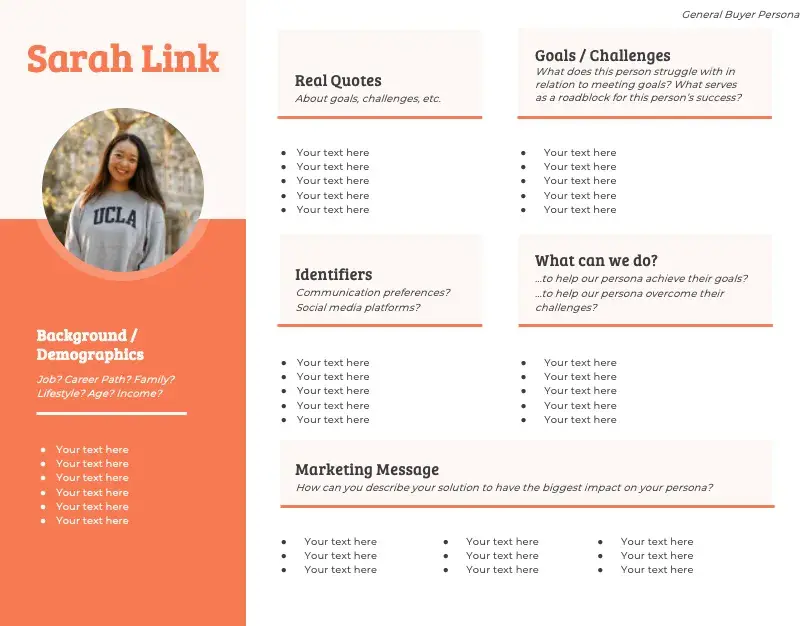
4. Identify your channel managers.
Depending on the size of your marketing team, you may have different people (or entire groups) in charge of other channels. However, you still must choose who specifically will ensure their channel(s) align with the campaign.
This is important for two reasons:
- So managers can be the expert on their channel (e.g., audience, posting cadence, optimization tactics, reporting strategies, etc.) and will know how to tailor the campaign to be the most successful.
- Because putting one person in charge of all channels may be overwhelming and cause the content and campaign to suffer.
Pro tip: If you’re like me, you may have a smaller marketing team where one person handles multiple channels. Regardless of your team size, do your best to share channel management responsibilities across a few people — ideally, with one person running one or two channels.
5. Create adaptable marketing assets and messaging.
You have your campaign goal, target audience(s), and marketing channels. It’s now time to create your integrated marketing campaign content. This stage is where copywriting, graphic design, and other creative processes come into play.
Before I dive into how, let’s talk about an essential component of integrated marketing content: adaptability.
To keep your campaign consistent (and ease your workload), you should be able to repurpose content for use on different channels.
For example, let’s say your integrated marketing campaign focuses on the launch of a new 3-minute brand video. You could repurpose this video into:
- 30-second and one-minute “trailer” videos
- Still images
- Quotes
- GIFs
- Hashtags
- Blog posts
- Soundbites
One great way to do this? AI tools like HubSpot’s Content Remix can be a huge time-saver.
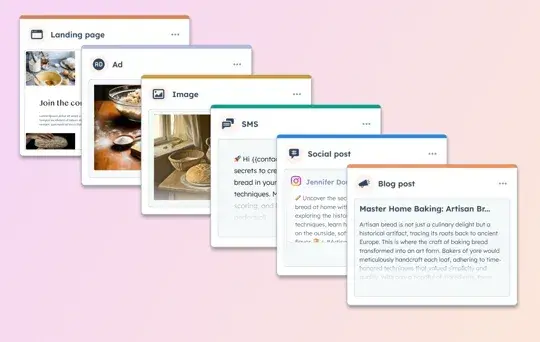
Pro tip: Create brand guidelines for your integrated marketing campaign to share with your team and any channel managers. This documentation could include a few things:
- Visual guidelines (logo, color palette, typography, etc.).
- Any developed and repurposed assets in multiple file formats.
- Voice and tone guidelines (taglines, preferred language, words to avoid, etc.).
- Messaging guidelines (pain points, goals, types of content, resources, etc.).
- Buyer persona information and guidelines.
6. Establish your integrated marketing communication plan for collecting leads.
Whether or not you intend your campaign to collect leads, you should always be ready to receive them. Trust me, you don’t want to leave this as an afterthought once you launch your campaign.
Step 1: Consider how a visitor might convert to a lead:
- Would they subscribe to your newsletter?
- Input their information to download a content offer?
- Create an account on your website?
Ensure these conversion aspects of your campaign are also on-brand with the rest of your visual and messaging assets.
Step 2: Consider how your leads will be nurtured once they convert.
- Would they roll into an automated email workflow?
- Would you pass them along to sales?
However you go about this step, I advise you to make sure your leads aren’t forgotten once they willingly give over their information.
Pro tip: I try to prioritize communicating with sales to confirm they’re aware of my campaign and on board with the plan for new leads and customers.
7. Launch, measure, and iterate your campaign.
Remember those KPIs and metrics I mentioned? Whichever KPIs relate to your overarching campaign goal (e.g., boosting brand awareness, rebranding, new product, etc.), start tracking those subsequent metrics each week, month, and/or quarter to see how successful it is at reaching your goal.
Don’t forget: Apply what you learn from each integrated marketing campaign to your future campaigns.
Integrated Marketing Strategies and Best Practices
As you construct your integrated marketing campaign, there are a few key strategies and best practices to remember. I’ve detailed them here, and they apply regardless of your chosen media, channels, or goals.
Align behind the scenes.
For you to successfully implement an integrated marketing approach, it’s imperative that you not only choose marketing channel managers but also that all your marketing managers communicate often about projects and campaigns.
While not every integrated marketing campaign or promotion must be on all channels, they should at least complement each other to avoid a fragmented brand experience for customers.
Consider the channel transition.
Integrated campaigns receive traffic from several sources. Consider how a visitor may view/experience each marketing channel:
- If it was their first visit.
- If they transitioned from another channel.
Think about how each channel can help others convert.
For example, say a customer saw your new billboard on their way to work and, once they arrived, visited the website on the billboard.
Imagine if, on your website, the customer couldn’t easily find whatever your billboard was marketing. How confusing would that be? That customer would likely drop off immediately.
Don’t neglect the overlap between your campaigns.
Integrated marketing exists to eradicate the silos of traditional marketing and bring together a cohesive campaign experience. For this reason, don’t neglect the places where your campaign overlaps.
I recommend checking these places to enhance your consistency across campaigns:
- Your email signature, where you can plug your social media handles, website URL, or video links.
- Your social media bios and posts, where you can include links to your website, blog posts, content offers, or other digital content.
- Your blog and website, where you can incorporate social sharing buttons.
- Your standalone landing pages, where you can optimize for relevant keywords and SEO.
- Your PPC copy, where you can test subject lines to see what your audience responds to.
While these overlaps might not directly support your campaign goals, they help your audience transition seamlessly between channels, enjoy that consistent, cohesive brand experience, and ultimately find their way to a page that converts them.
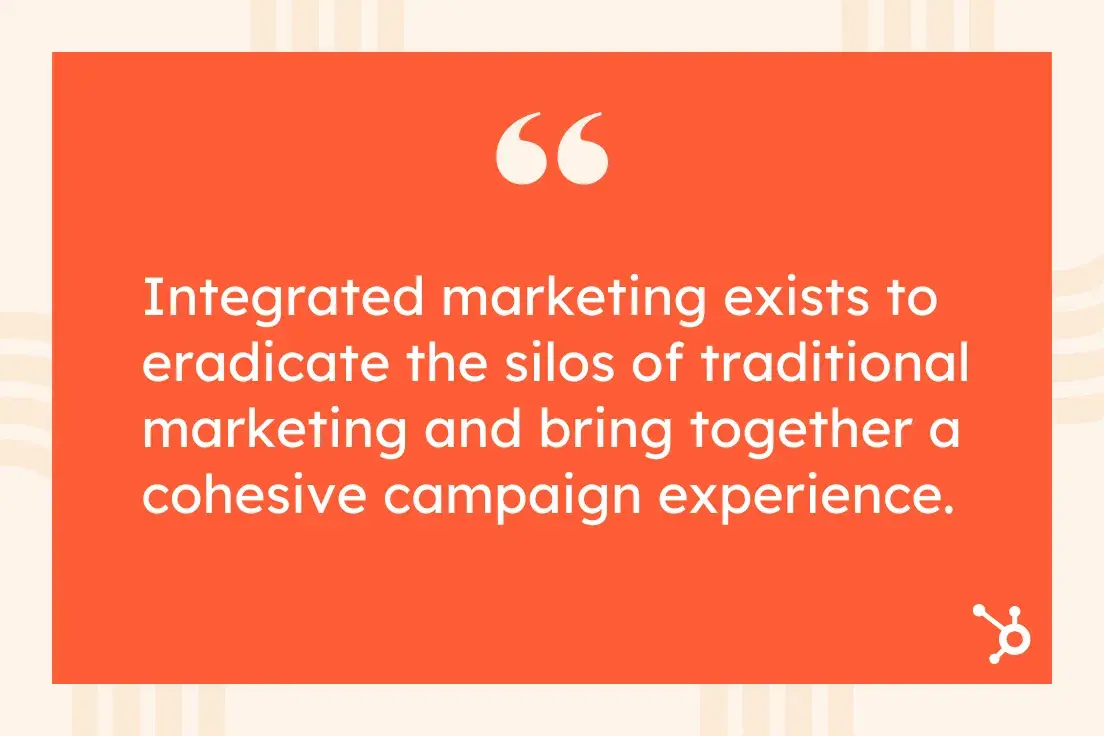
Every marketer knows how much you can learn from those before you. In this section, I’ve pulled together a handful of well-executed integrated marketing campaigns to give you an example of this tactic’s success.
1. Apple TV+’s “Severance” Grand Central Station Stunt
If you’re an avid television watcher, you’ve likely heard of the successful Apple TV show “Severance.” Ahead of the season two premiere of the show, the cast and crew set up an unexpected pop-up at the Grand Central Station in New York City, gathering the attention of local New Yorkers and the world.

Leading up to the Severance pop-up, Apple TV changed the main header image on their app to one of Severance and also put the show in their number one slot for popular series.
By utilizing an integrated marketing strategy, they ensured that the publicity stunt at Grand Central would point viewers to their app, which then made it very easy to find the show.
Pro tip: If you are planning a publicity stunt for the promotion of a particular product, it’s imperative that you make sure your website, social media, PR, etc., all also promote the same product.
2. Duolingo and Social Media Integrated Marketing
Sassy comments from corporations on social media is nothing new. But Duolingo, the language learning app, takes this to the next level with its unhinged and hilarious brand image.
Duolingo went viral on TikTok and other social media platforms in 2025 when a TikTok creator asked the brand to create a video of the Duolingo owl mascot going to sleep to appease her toddler, who wouldn’t go to bed until the owl did as well. This viral video was shared by many on social media as well as featured on the Duolingo app and website.
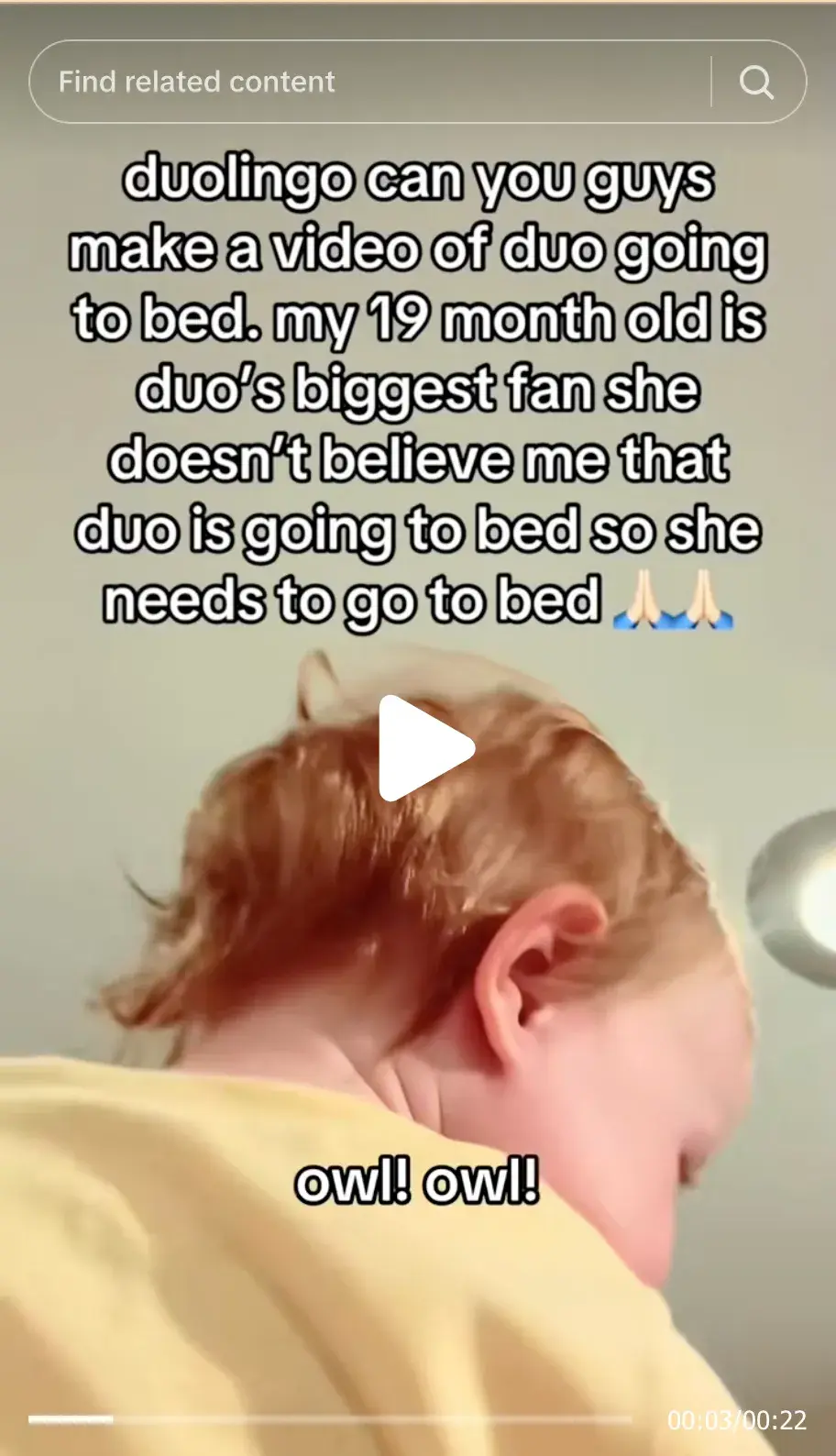
We can learn a lot from Duolingo’s integrated marketing strategy by looking at their different social media platforms. Their owl mascot is heavily featured and is always up to something unexpected. Replies from the brand have a unified (if not slightly scary) voice, and customers get the same campaign, no matter where they enter the marketing funnel.
Pro tip: If your corporation is going to reply to comments on social media, it’s vital to have a unified brand voice and image.
3. The Barbie Movie and Mattel

2023 was a big year for movies, and one of those successful blockbusters was the “Barbie” movie, starring Margot Robbie and Ryan Gosling.
The marketers and advertisers behind the movie used several integrated marketing strategies to promote the movie, including having Margot Robbie dress up as different iconic Barbies during the press tour, having a photo booth Barbie box for moviegoers to snap pics of and post to social media, and encouraging guests to wear pink when attending the film.
All of these were successful integrated marketing tactics, but one of the best moves was involving Barbie’s original company, Mattel, to participate. The year the Barbie movie was released, Mattel created individual Barbie dolls for each of the main characters of the film.
This kind of integrated marketing is successful because those who enjoy Barbie dolls wanted to know what these new dolls were based on, and those who enjoyed the movie were motivated to check out the Barbie doll merchandise for the film, increasing profits for both.
Pro tip: If you’re including merchandise in your integrated marketing campaign, make sure it’s quality and something people will actually want to buy. Cheap or rushed merchandise will not help your campaign but rather harm it.
4. Coca-Cola and Oreo Collab
Limited edition products and collaborations are common marketing strategies consumers experience all the time. But what happens when you pair up two unlikely yet gigantic brand partners like Oreo and Coca-Cola? A surprising success.
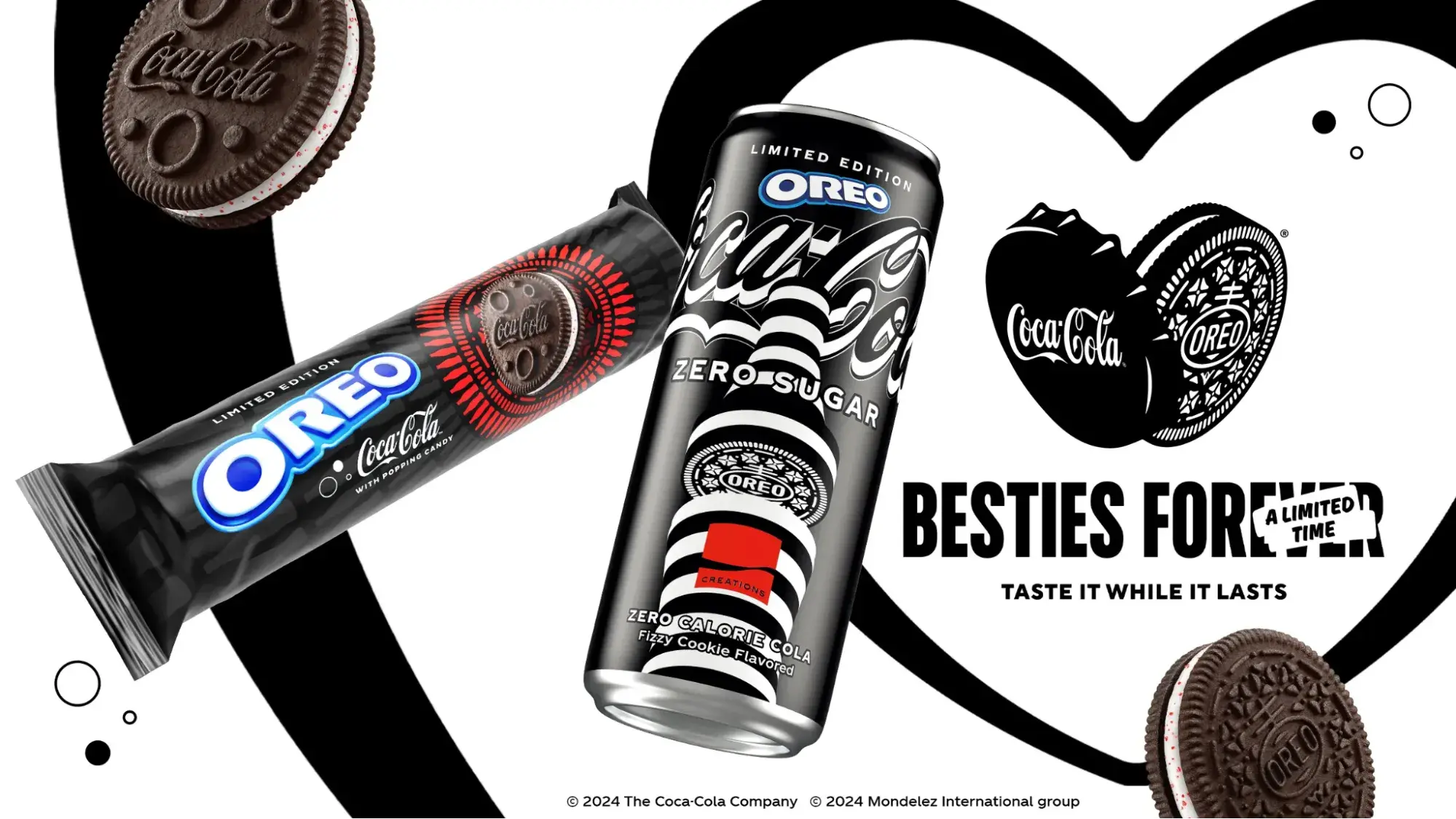
Unlike past collaborations where a soda-inspired cookie might exist or just a cookie-inspired soda, the Oreo Coke collaboration had both — and both were advertised on every possible channel.
When you’re a big brand like Oreo or Coke, you often don’t even need your own social media campaign – consumers will taste test and promote your product for you.
And that’s exactly what happened here. If you visit either company’s websites, social media, or more, you’ll see that they all promote the limited edition collaboration items.
Pro tip: If your brand is planning to collaborate with another brand, make sure that you’re both on board for an integrated marketing approach and strategy so customers can get a unified experience no matter which brand they start with.
5. Spotify “Wrapped” Campaign
The best marketing campaigns require little to no advertising because your customers love them so much they do the marketing for you. This is the case with music app Spotify’s yearly “Wrapped” campaign.
Spotify Wrapped shows listeners their top artists, songs, listening time, and more. This campaign returns yearly and has improved its integrated marketing strategy over time.
I remember the first couple of years that Spotify launched Wrapped — it was difficult to find where my yearly wrapped was located on the app. By improving their integrated marketing strategy, you can now easily find your Wrapped on the front page of their app, website, and in your inbox. This has helped customers avoid getting frustrated and improved the whole user experience.

Pro tip: If you launch a yearly campaign, it’s important to add new features and optimizations every year. Consider updating your design, including new additions or stats, or identifying new channels to showcase the campaign.
Marketing Plan Template
As you can see, planning is the key to successful integrated marketing. If you need extra guidance through the planning process, I recommend HubSpot’s free marketing template to help set you off on the right track.
The template includes:
- A business summary
- Business initiatives
- Target marketing
- Market strategy
- Budget
- Marketing channels
- Marketing Technology
I like this template because it’s both easy to fill out and perfect for sharing with your marketing team and executives who need to sign off on your plan. The template also invites you to evaluate your strengths and weaknesses while looking for opportunities and avoiding threats.
I believe that armed with a solid budget and integrated marketing communication plan, you’ll be able to get executive buy-in to begin reaching customers on channels you haven’t previously.
Integrated Marketing Helps You Grow Your Business — Better
After reviewing the concept of integrated marketing, I appreciate how it turns your marketing campaigns into multi-channel movements.
In today’s omnichannel world — with consumers encountering your brand online, on social media, and on their daily commutes — I believe integrated marketing is more important than ever to capture new customers and build brand recognition and loyalty.
Use the strategies, template, and best practices shared in this post to launch your own integrated marketing strategy successfully.
Editor's note: This post was originally published in October 2019 and has been updated for comprehensiveness.
from Marketing https://blog.hubspot.com/marketing/integrated-marketing
I fly Southwest Airlines almost exclusively, and one thing I’ve noticed about Southwest is that their branding is on point.
Whether I’m booking a flight on their mobile application, being served my go-to in-flight ginger ale, or walking through the terminal at Midway Airport, I’m surrounded by Southwest’s consistent brand colors, messaging, and imagery.
This is an example of integrated marketing at work. If you’re interested in presenting a cohesive, consistent brand experience that leaves your products or services top-of-mind — like Southwest does — this guide is for you.
Read on to learn more about integrated marketing, how to weave it into your marketing plan, and how to create your own campaign.
Table of Contents
Imagine discovering a new brand on Instagram and visiting the company’s website to purchase one of its products. If their website promoted a different message or campaign than the one you found on their Instagram account, you’d have a hard time understanding the gist of the brand, right?
Integrated marketing exists to eliminate these disparities and differences regardless of how or when a customer interacts with your brand. It’s similar to multi-channel marketing, except integrated marketing aligns the message you share on all those channels.
I’ve found that integrated marketing doesn’t just apply only to your inbound or digital marketing channels; it also includes traditional media channels. Many integrated marketing examples I’ll review below incorporate conventional marketing channels such as print, radio, and TV ads.
Why are integrated marketing communication plans effective?
While integrated marketing campaigns can differ in their goals (e.g., converting views, building brand awareness, etc.), they should all have one component in common: to align your marketing channels to present a united marketing “front.”
I’ve also found it more effective to run integrated marketing campaigns than campaigns on individual channels. Integrated marketing campaigns are more impactful for a few reasons because they tend to:
- Reach a wider audience than a single marketing channel.
- Increase visibility as they are more likely to be seen on multiple channels.
- Build trust with visitors as they see a consistent message on multiple channels.
- Save you money since assets are shareable between different marketing channels.
So, how can you build your integrated marketing campaign? These are the steps I follow to get started.
1. Establish your overarching campaign goal.
Before you consider what channels will be part of your integrated marketing campaign, you must consider the goal of the entire campaign.
Once you’ve identified your goal, remember to make it SMART. This will help you stay focused, track your campaign success, and learn how to improve the next time.
When I’ve tracked my own campaigns, I’ve focused on creating goals that relate to key performance indicators (KPIs) and their subsequent metrics.
|
KPI |
RELATED METRICS |
|
Traffic/reach |
Unique page views by channel and source |
|
Engagement |
Bounce rate; average time on page |
|
Top (and falling) content |
Top page views; top exits |
|
Impact |
Click-throughs; conversions; backlinks |
|
Sentiment |
Comments; social shares |
|
Lead generation |
Total leads; total sessions; session to lead conversion rate |
|
Sales |
Lead to marketing qualified lead (MQL); MQL to sales qualified lead (SQL); customer purchase/closed-won business |
Also, while increased engagement and new leads are always exciting, a multi-channel campaign should consider the bigger picture: how your campaign impacts sales opportunities and business revenue.
2. Choose your marketing channels and set goals for each one.
Now that you know your overarching integrated marketing campaign goal, you probably have a better idea of what channels (if not all of them) can help you reach that goal.
For example, if you want to roll out a new logo and branding suite, you don’t necessarily need to leverage radio ads.
On the other hand, if you’re extending your audience to target a new geographic region or city, radio ads, billboard ads, TV ads, and other local channels may come in handy.
In my opinion, there are 10 major marketing “channels” that you can use to distribute your campaign content, including:
- Advertising (both print and PPC)
- Direct marketing
- Email marketing
- PR
- Personal selling
- Sales promotions
- Digital marketing (e.g., website, content marketing, and SEO)
- Social media
- Events and sponsorships
- Packaging
Your integrated marketing campaign should include a variety of marketing channels to reach the widest audience and drive home your campaign message. If you see one or more channels plateau, don’t hesitate to add, remove, or test new ones.

3. Define your buyer personas by channel.
Every marketing channel targets its specific buyer persona. For this reason, instead of defining a broad persona for your campaign, I recommend defining your audience by channel.
There will inevitably be some overlap, but I think it’s wise to understand exactly who you’re talking to on each medium and how to tailor those specific assets to be the most successful.
With some campaigns, you may be targeting a specific audience. In this case, flip steps 2 and 3 — define your buyer persona(s) first and then decide which channels can help you reach that audience.
Pro tip: In addition to HubSpot’s (fun!) buyer person tool, you can utilize free buyer persona templates to jumpstart this process.

4. Identify your channel managers.
Depending on the size of your marketing team, you may have different people (or entire groups) in charge of other channels. However, you still must choose who specifically will ensure their channel(s) align with the campaign.
This is important for two reasons:
- So managers can be the expert on their channel (e.g., audience, posting cadence, optimization tactics, reporting strategies, etc.) and will know how to tailor the campaign to be the most successful.
- Because putting one person in charge of all channels may be overwhelming and cause the content and campaign to suffer.
Pro tip: If you’re like me, you may have a smaller marketing team where one person handles multiple channels. Regardless of your team size, do your best to share channel management responsibilities across a few people — ideally, with one person running one or two channels.
5. Create adaptable marketing assets and messaging.
You have your campaign goal, target audience(s), and marketing channels. It’s now time to create your integrated marketing campaign content. This stage is where copywriting, graphic design, and other creative processes come into play.
Before I dive into how, let’s talk about an essential component of integrated marketing content: adaptability.
To keep your campaign consistent (and ease your workload), you should be able to repurpose content for use on different channels.
For example, let’s say your integrated marketing campaign focuses on the launch of a new 3-minute brand video. You could repurpose this video into:
- 30-second and one-minute “trailer” videos
- Still images
- Quotes
- GIFs
- Hashtags
- Blog posts
- Soundbites
One great way to do this? AI tools like HubSpot’s Content Remix can be a huge time-saver.

Pro tip: Create brand guidelines for your integrated marketing campaign to share with your team and any channel managers. This documentation could include a few things:
- Visual guidelines (logo, color palette, typography, etc.).
- Any developed and repurposed assets in multiple file formats.
- Voice and tone guidelines (taglines, preferred language, words to avoid, etc.).
- Messaging guidelines (pain points, goals, types of content, resources, etc.).
- Buyer persona information and guidelines.
6. Establish your integrated marketing communication plan for collecting leads.
Whether or not you intend your campaign to collect leads, you should always be ready to receive them. Trust me, you don’t want to leave this as an afterthought once you launch your campaign.
Step 1: Consider how a visitor might convert to a lead:
- Would they subscribe to your newsletter?
- Input their information to download a content offer?
- Create an account on your website?
Ensure these conversion aspects of your campaign are also on-brand with the rest of your visual and messaging assets.
Step 2: Consider how your leads will be nurtured once they convert.
- Would they roll into an automated email workflow?
- Would you pass them along to sales?
However you go about this step, I advise you to make sure your leads aren’t forgotten once they willingly give over their information.
Pro tip: I try to prioritize communicating with sales to confirm they’re aware of my campaign and on board with the plan for new leads and customers.
7. Launch, measure, and iterate your campaign.
Remember those KPIs and metrics I mentioned? Whichever KPIs relate to your overarching campaign goal (e.g., boosting brand awareness, rebranding, new product, etc.), start tracking those subsequent metrics each week, month, and/or quarter to see how successful it is at reaching your goal.
Don’t forget: Apply what you learn from each integrated marketing campaign to your future campaigns.
Integrated Marketing Strategies and Best Practices
As you construct your integrated marketing campaign, there are a few key strategies and best practices to remember. I’ve detailed them here, and they apply regardless of your chosen media, channels, or goals.
Align behind the scenes.
For you to successfully implement an integrated marketing approach, it’s imperative that you not only choose marketing channel managers but also that all your marketing managers communicate often about projects and campaigns.
While not every integrated marketing campaign or promotion must be on all channels, they should at least complement each other to avoid a fragmented brand experience for customers.
Consider the channel transition.
Integrated campaigns receive traffic from several sources. Consider how a visitor may view/experience each marketing channel:
- If it was their first visit.
- If they transitioned from another channel.
Think about how each channel can help others convert.
For example, say a customer saw your new billboard on their way to work and, once they arrived, visited the website on the billboard.
Imagine if, on your website, the customer couldn’t easily find whatever your billboard was marketing. How confusing would that be? That customer would likely drop off immediately.
Don’t neglect the overlap between your campaigns.
Integrated marketing exists to eradicate the silos of traditional marketing and bring together a cohesive campaign experience. For this reason, don’t neglect the places where your campaign overlaps.
I recommend checking these places to enhance your consistency across campaigns:
- Your email signature, where you can plug your social media handles, website URL, or video links.
- Your social media bios and posts, where you can include links to your website, blog posts, content offers, or other digital content.
- Your blog and website, where you can incorporate social sharing buttons.
- Your standalone landing pages, where you can optimize for relevant keywords and SEO.
- Your PPC copy, where you can test subject lines to see what your audience responds to.
While these overlaps might not directly support your campaign goals, they help your audience transition seamlessly between channels, enjoy that consistent, cohesive brand experience, and ultimately find their way to a page that converts them.

Every marketer knows how much you can learn from those before you. In this section, I’ve pulled together a handful of well-executed integrated marketing campaigns to give you an example of this tactic’s success.
1. Apple TV+’s “Severance” Grand Central Station Stunt
If you’re an avid television watcher, you’ve likely heard of the successful Apple TV show “Severance.” Ahead of the season two premiere of the show, the cast and crew set up an unexpected pop-up at the Grand Central Station in New York City, gathering the attention of local New Yorkers and the world.

Leading up to the Severance pop-up, Apple TV changed the main header image on their app to one of Severance and also put the show in their number one slot for popular series.
By utilizing an integrated marketing strategy, they ensured that the publicity stunt at Grand Central would point viewers to their app, which then made it very easy to find the show.
Pro tip: If you are planning a publicity stunt for the promotion of a particular product, it’s imperative that you make sure your website, social media, PR, etc., all also promote the same product.
2. Duolingo and Social Media Integrated Marketing
Sassy comments from corporations on social media is nothing new. But Duolingo, the language learning app, takes this to the next level with its unhinged and hilarious brand image.
Duolingo went viral on TikTok and other social media platforms in 2025 when a TikTok creator asked the brand to create a video of the Duolingo owl mascot going to sleep to appease her toddler, who wouldn’t go to bed until the owl did as well. This viral video was shared by many on social media as well as featured on the Duolingo app and website.

We can learn a lot from Duolingo’s integrated marketing strategy by looking at their different social media platforms. Their owl mascot is heavily featured and is always up to something unexpected. Replies from the brand have a unified (if not slightly scary) voice, and customers get the same campaign, no matter where they enter the marketing funnel.
Pro tip: If your corporation is going to reply to comments on social media, it’s vital to have a unified brand voice and image.
3. The Barbie Movie and Mattel

2023 was a big year for movies, and one of those successful blockbusters was the “Barbie” movie, starring Margot Robbie and Ryan Gosling.
The marketers and advertisers behind the movie used several integrated marketing strategies to promote the movie, including having Margot Robbie dress up as different iconic Barbies during the press tour, having a photo booth Barbie box for moviegoers to snap pics of and post to social media, and encouraging guests to wear pink when attending the film.
All of these were successful integrated marketing tactics, but one of the best moves was involving Barbie’s original company, Mattel, to participate. The year the Barbie movie was released, Mattel created individual Barbie dolls for each of the main characters of the film.
This kind of integrated marketing is successful because those who enjoy Barbie dolls wanted to know what these new dolls were based on, and those who enjoyed the movie were motivated to check out the Barbie doll merchandise for the film, increasing profits for both.
Pro tip: If you’re including merchandise in your integrated marketing campaign, make sure it’s quality and something people will actually want to buy. Cheap or rushed merchandise will not help your campaign but rather harm it.
4. Coca-Cola and Oreo Collab
Limited edition products and collaborations are common marketing strategies consumers experience all the time. But what happens when you pair up two unlikely yet gigantic brand partners like Oreo and Coca-Cola? A surprising success.

Unlike past collaborations where a soda-inspired cookie might exist or just a cookie-inspired soda, the Oreo Coke collaboration had both — and both were advertised on every possible channel.
When you’re a big brand like Oreo or Coke, you often don’t even need your own social media campaign – consumers will taste test and promote your product for you.
And that’s exactly what happened here. If you visit either company’s websites, social media, or more, you’ll see that they all promote the limited edition collaboration items.
Pro tip: If your brand is planning to collaborate with another brand, make sure that you’re both on board for an integrated marketing approach and strategy so customers can get a unified experience no matter which brand they start with.
5. Spotify “Wrapped” Campaign
The best marketing campaigns require little to no advertising because your customers love them so much they do the marketing for you. This is the case with music app Spotify’s yearly “Wrapped” campaign.
Spotify Wrapped shows listeners their top artists, songs, listening time, and more. This campaign returns yearly and has improved its integrated marketing strategy over time.
I remember the first couple of years that Spotify launched Wrapped — it was difficult to find where my yearly wrapped was located on the app. By improving their integrated marketing strategy, you can now easily find your Wrapped on the front page of their app, website, and in your inbox. This has helped customers avoid getting frustrated and improved the whole user experience.

Pro tip: If you launch a yearly campaign, it’s important to add new features and optimizations every year. Consider updating your design, including new additions or stats, or identifying new channels to showcase the campaign.
Marketing Plan Template
As you can see, planning is the key to successful integrated marketing. If you need extra guidance through the planning process, I recommend HubSpot’s free marketing template to help set you off on the right track.
The template includes:
- A business summary
- Business initiatives
- Target marketing
- Market strategy
- Budget
- Marketing channels
- Marketing Technology
I like this template because it’s both easy to fill out and perfect for sharing with your marketing team and executives who need to sign off on your plan. The template also invites you to evaluate your strengths and weaknesses while looking for opportunities and avoiding threats.
I believe that armed with a solid budget and integrated marketing communication plan, you’ll be able to get executive buy-in to begin reaching customers on channels you haven’t previously.
Integrated Marketing Helps You Grow Your Business — Better
After reviewing the concept of integrated marketing, I appreciate how it turns your marketing campaigns into multi-channel movements.
In today’s omnichannel world — with consumers encountering your brand online, on social media, and on their daily commutes — I believe integrated marketing is more important than ever to capture new customers and build brand recognition and loyalty.
Use the strategies, template, and best practices shared in this post to launch your own integrated marketing strategy successfully.
Editor's note: This post was originally published in October 2019 and has been updated for comprehensiveness.
![Download Now: Free Marketing Plan Template [Get Your Copy]](https://no-cache.hubspot.com/cta/default/53/aacfe6c7-71e6-4f49-979f-76099062afa0.png)

